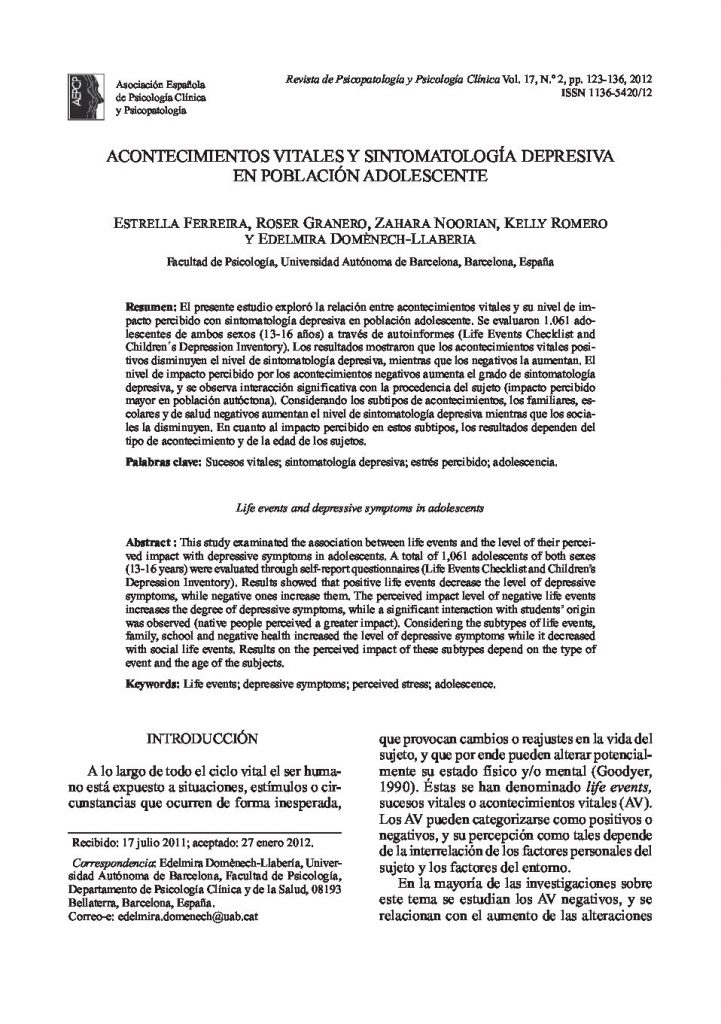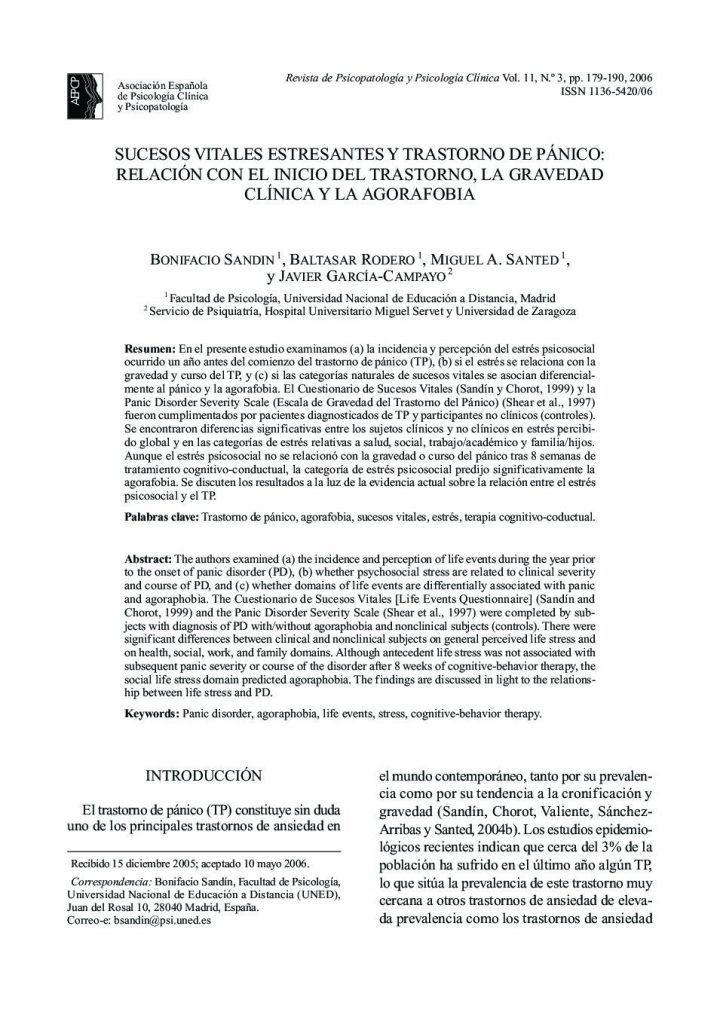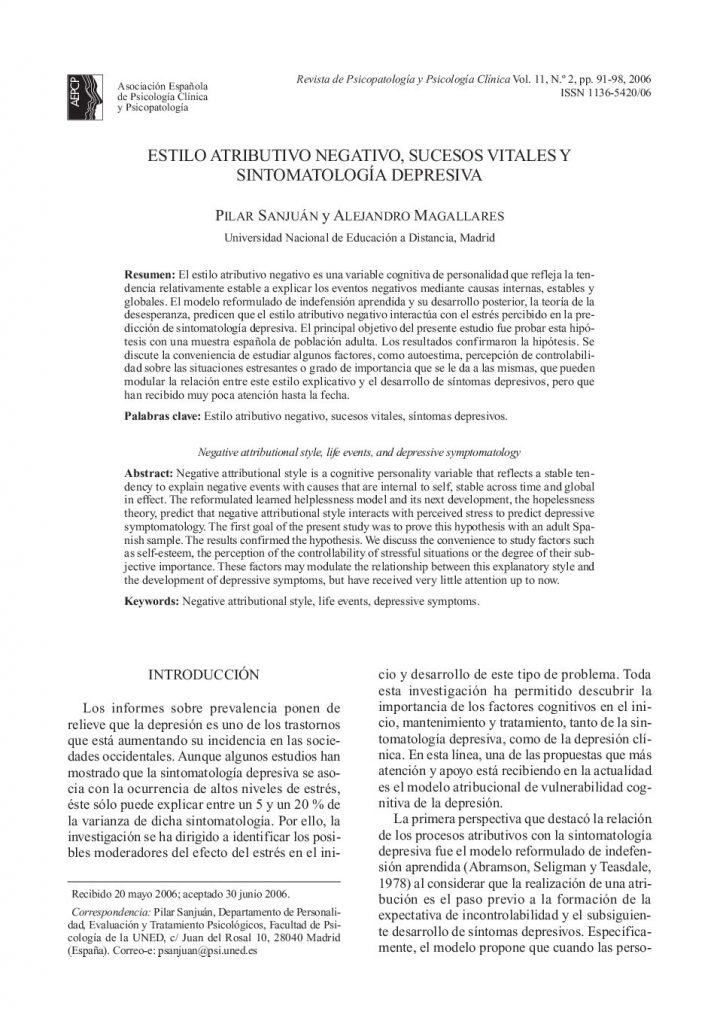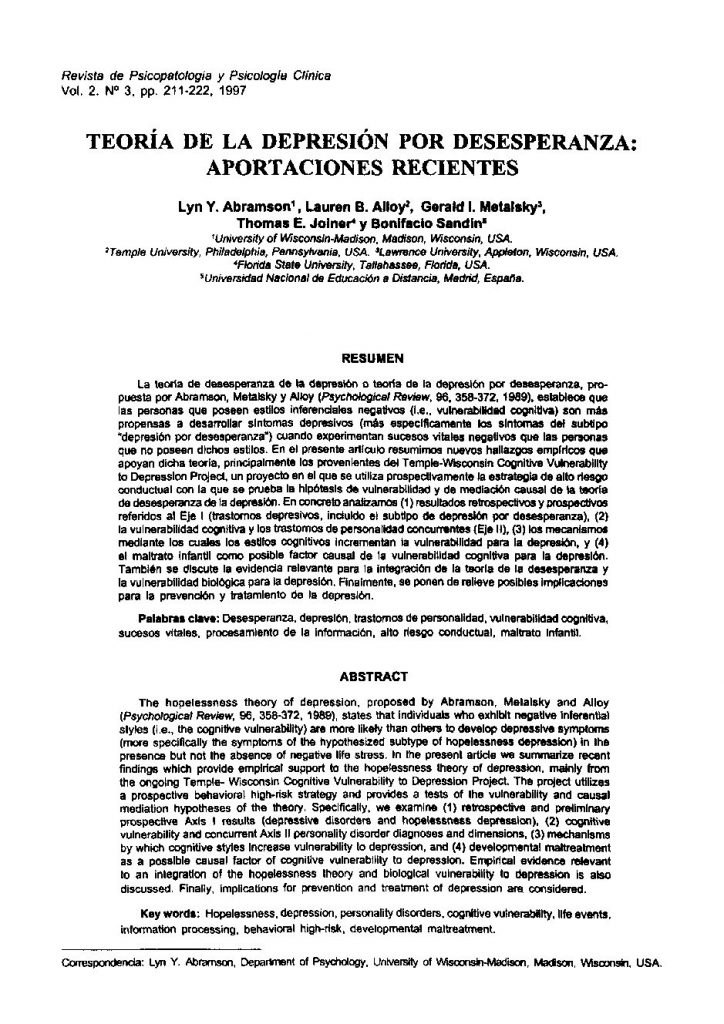Acontecimientos vitales y sintomatología depresiva en población adolescente.

- Relación de la personalidad tipo D y el agotamiento vital con las emociones negativas y el ajuste psicológico a la enfermedad cardiaca.
- Propiedades psicométricas de la escala de ansiedad ante la muerte en personas con VIH y población general.
- Acontecimientos vitales y sintomatología depresiva en población adolescente.
- Niveles de cortisol salival y tipos de personalidad de Grossarth-Maticek y Eysenck: Un estudio transcultural.
- El laberinto de la somatización: Se buscan salidas.
- Vicente Pelechano (2011): Tratamientos psicológicos en enfermedades crónicas. Madrid: Klinik.
- Stefan G. Hofmann (2012): Psychobiological approaches for anxiety disorders: Treatment combination strategies. Chichester (UK): Wiley-Blackwell.
El presente estudio exploró la relación entre acontecimientos vitales y su nivel de impacto percibido con sintomatología depresiva en población adolescente. Se evaluaron 1.061 adolescentes de ambos sexos (13–16 años) a través de autoinformes (Life Events Checklist y Children´s Depression Inventory). Los resultados mostraron que los acontecimientos vitales positivos disminuyen el nivel de sintomatología depresiva, mientras que los negativos la aumentan. El nivel de impacto percibido por los acontecimientos negativos aumenta el grado de sintomatología depresiva, y se observa interacción significativa con la procedencia del sujeto (impacto percibido mayor en población autóctona). Considerando los subtipos de acontecimientos, los familiares, escolares y de salud negativos aumentan el nivel de sintomatología depresiva mientras que los sociales la disminuyen. En cuanto al impacto percibido en estos subtipos, los resultados dependen del tipo de acontecimiento y de la edad de los sujetos.
This study examined the association between life events and the level of their perceived impact with depressive symptoms in adolescents. A total of 1061 adolescents of both sexes (13 - 16 years) were evaluated through self-report questionnaires (Life Events Checklist and Children's Depression Inventory). Results showed that positive life events decrease the level of depressive symptoms, while negative ones increase them. The perceived impact level of negative life events increases the degree of depressive symptoms, while a significant interaction with students’ origin was observed (native people perceived a greater impact). Considering the subtypes of life events, family, school and negative health increased the level of depressive symptoms while it decreased with social life events. Results on the perceived impact of these subtypes depend on the type of event and the age of the subjects.






